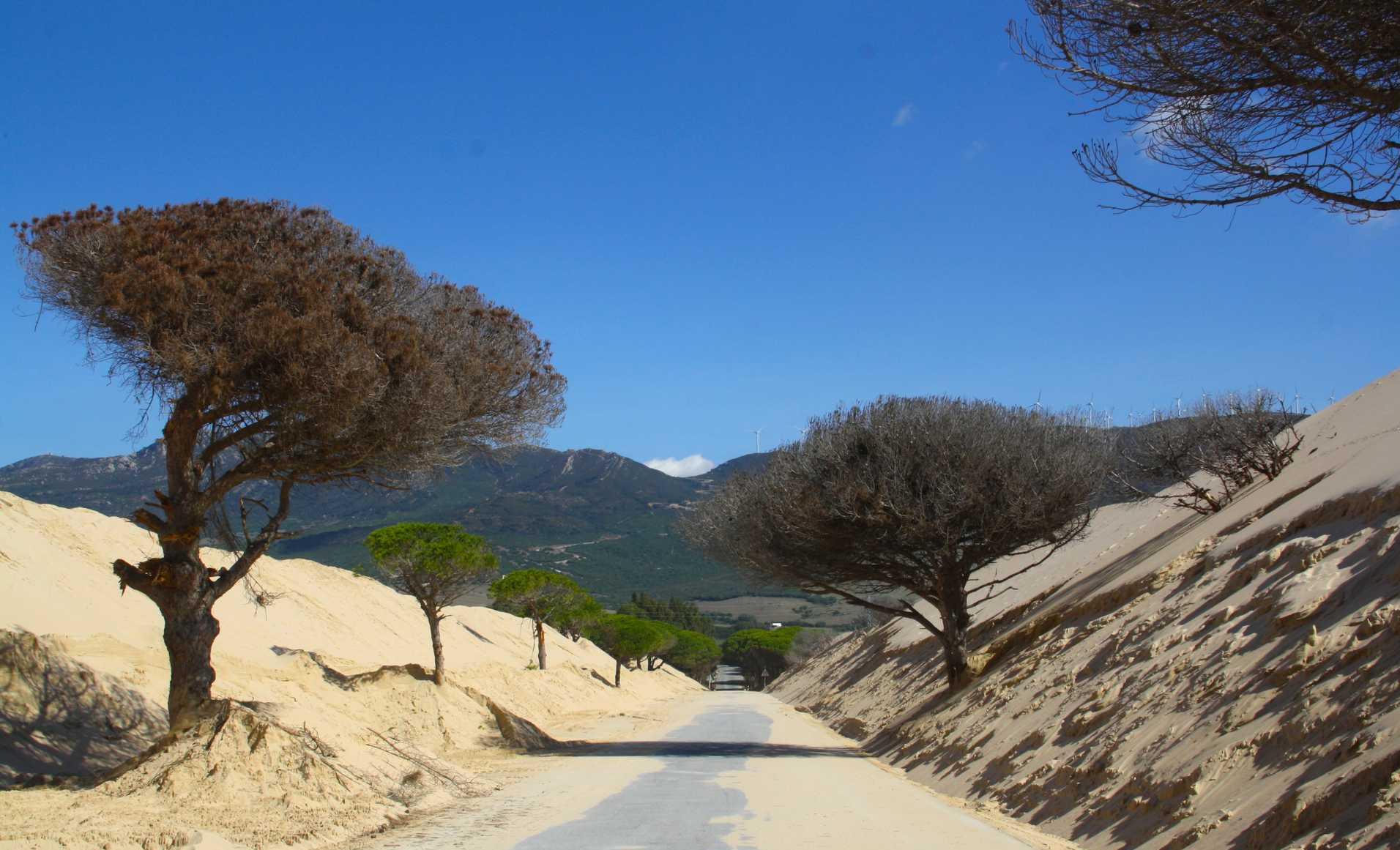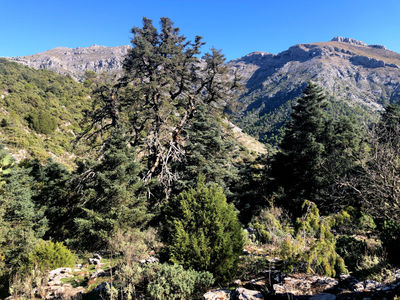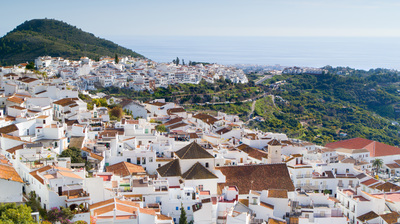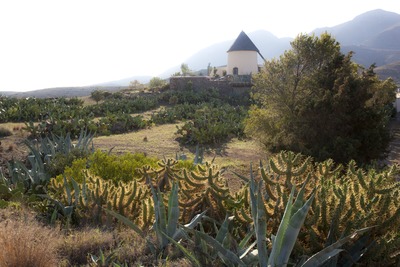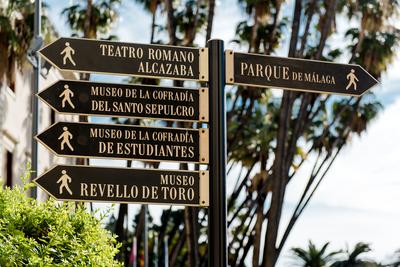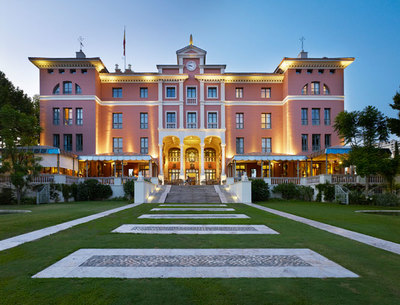The legacy of María Zambrano in Vélez-Málaga
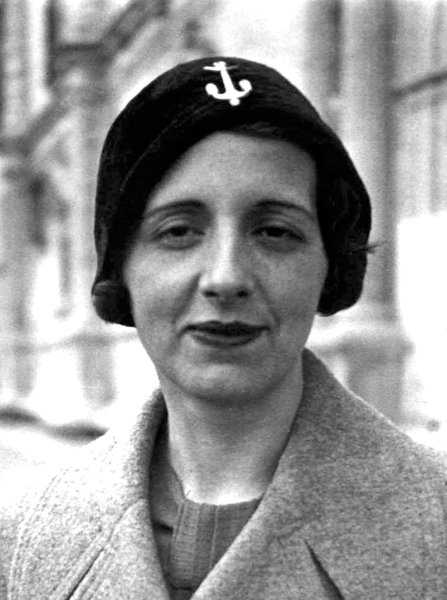
Genuine, constant and boundless thinker and critic of rationalism outlining her poetic reason. Lived in exile between Europe and Latin America, she is a leading intellectual in Spanish history.
María Zambrano (Vélez-Málaga, 1904 - Madrid, 1991)
Thinker of freedom
Philosopher. She spent her childhood between Madrid and Segovia, accompanying her father, the thinker and teacher, Blas José Zambrano García. In 1926, her family moved definitively to Madrid, and there she studied philosophy at the Central University of Madrid, under the teaching of García Morente, Julián Besteiro, Xavier Zubiri and Ortega y Gasset, the last of whom was a philosopher who she was an admirer of her whole life. She supported the restoration of the Second Republic, although she declined to appear in court to support the PSOE. In 1932, she replaced Zubiri as Professor of Metaphysics at the Central University, where she remained until 1936. In 1939, she crossed the French border in exile.
In 1981 she was awarded the Príncipe de Asturias Award for Communication and Humanities and her hometown named her "Favourite Daughter". In 1982, the University of Malaga agreed to name her as doctor honoris causa.
The end of her exile came about on 20 November 1984, when she returned to Madrid after four decades of absence. In the Malaga philosopher's own words, she did not want to return until her country had been "somewhat sweetened and liberated". In Spain, official awards kept coming: in 1985, the Regional Government of Andalusia named her "Favourite Daughter of Andalusia"; in 1987, a foundation named after her was constituted in Vélez-Málaga; and in 1988 she was awarded Spanish literature's maximum honour, the Miguel de Cervantes Prize, and was the first woman to receive the award. On 6 February 1991, she died in Madrid and was buried in Vélez-Málaga. At her request, her tombstone was engraved with a quote from the Bible, Song of Songs: "Surge amica mea et veni?" (Rise, my beloved, and come).
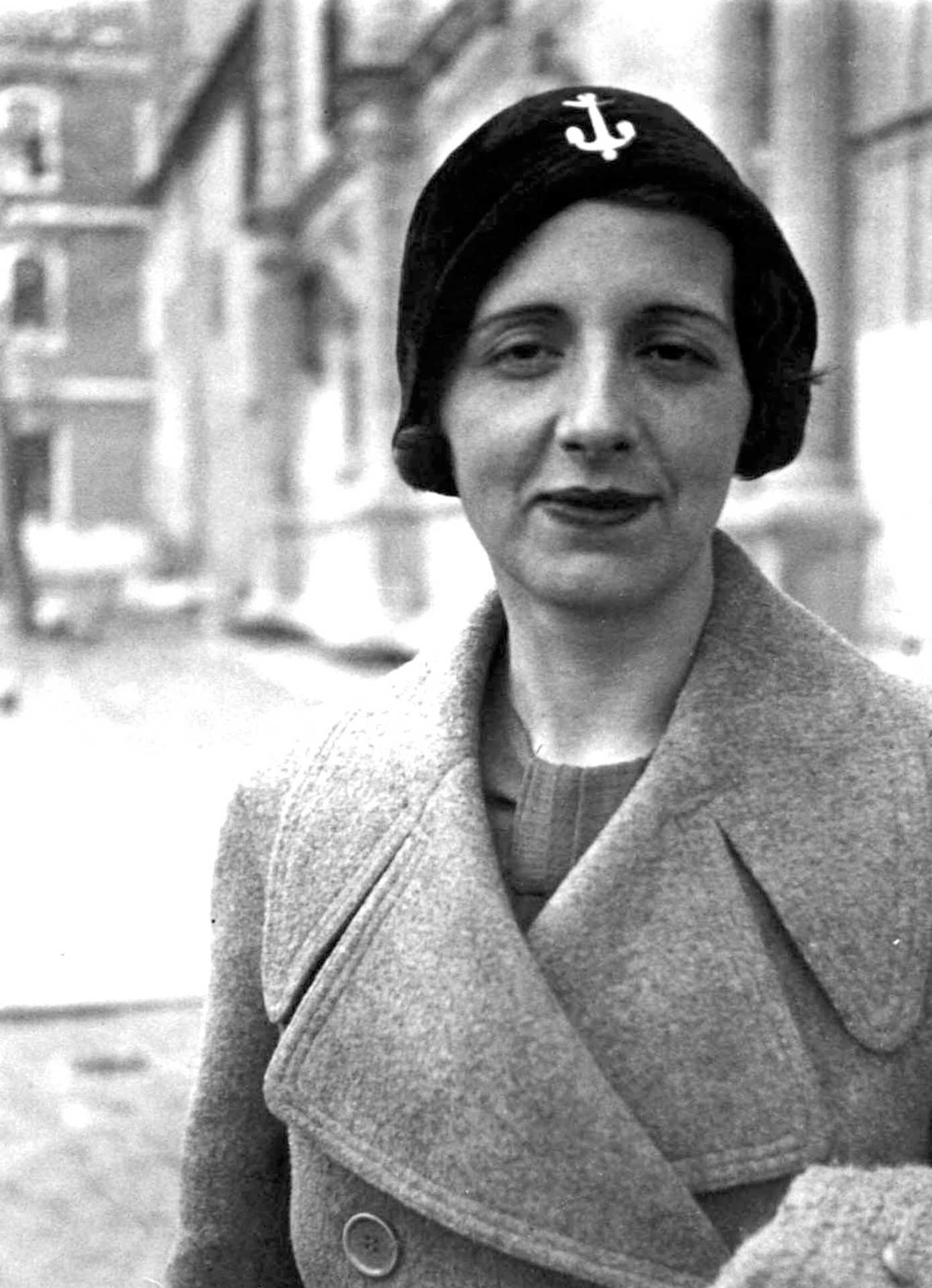
Vélez Foundation
The María Zambrano Foundation has its headquarters in the Palacio Marqués de Beniel in Vélez-Málaga. It is the most important building in the town due to its grandeur, beauty and influence on domestic architecture in the settlement. In the 19th century it was a court and the Town Hall, a function it has held for almost the entire 20th century. Today, it houses the María Zambrano Foundation. It was built in the early 17th century by Alonso de Molina y Medrano, who was an important figure in the era Philip II and who also built the nearby main chapel at San Francisco Church.
The Archive of the María Zambrano Foundation has an exhibition hall where visitors are shown a selection of original documents, manuscripts, first publications, correspondence, photographs, pictures, audiovisual material, etc. that enables them to learn about the person and work of María Zambrano in an entertaining way.
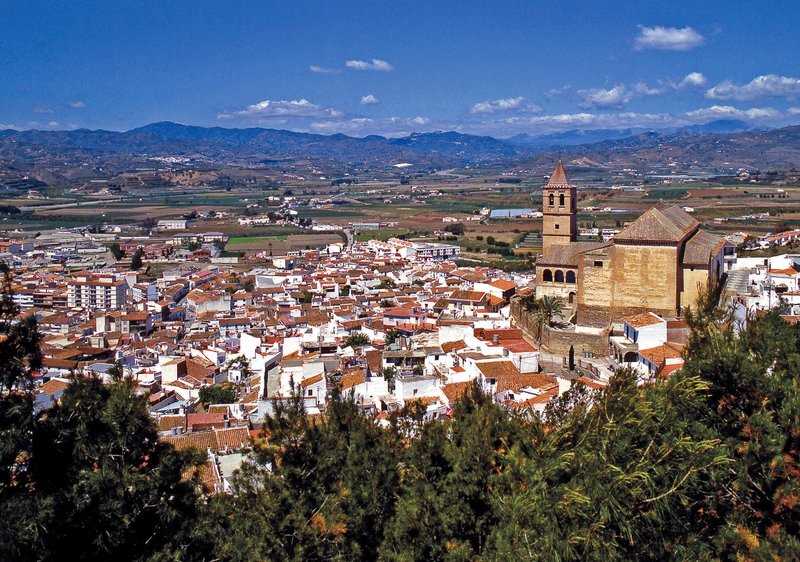
The town of Vélez-Málaga sits in the valley formed by the Vélez River and Malaga's mountains. These mountains constitute the northern edge of the town, which stretches south towards the coast, tracing an elongated urban form. On a map, two main parts can be distinguished: to the north, the original and historic centre that largely corresponds to the Arab city arranged around the fortress/alcazaba, and its subsequent expansion and restructuring following its conquest; and to the south, the modern town, which is set around a main axis comprised of the Avenida de Viva Pérez and the Avenida Rey Juan Carlos.
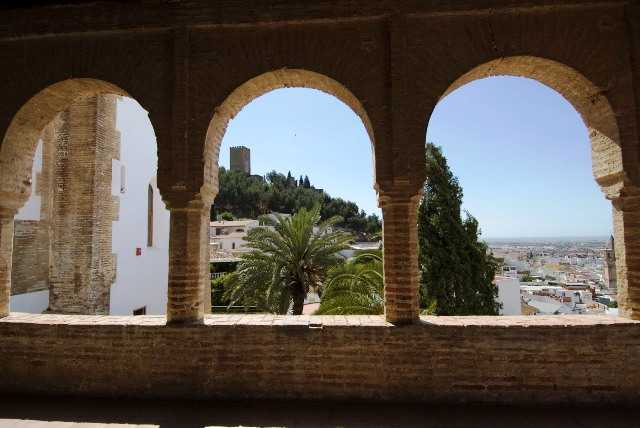
The original town is characterised by an urban structure formed by narrow streets whose layout is winding to adapt to the sloping terrain (examples of these are Calle Subida a Fortaleza, Calle Cercadillo de San Sebastián, Calle Muralla Alta...) The central part of the fortress/alcazaba's location and the current Plaza Roja, wher the old mosque was located, is today home to Santa María la Mayor de la Encarnación Church. From here, the neighbourhoods and old outskirts of Vélez-Málaga extend: La Villa, Arroyo de San Sebastián, San Francisco and the Pajarillo area, in the foothills of the Cerro de los Remedios, which revolve around the current Plaza de la Constitución and Plaza de San Francisco, and the streets Calle Tiendas, Calle Real de la Villa-Tres Casa, Calle Carreras and Calle Arroyo San Sebastián. The El Pilar district, which is the town's northernmost, is another highlight and itis built around Plaza and Calle San Juan de Dios. To the west of the historic quarter, in the Cruz Verde area, modern expansion in the early 19th century surged ahead with the layout of the Paseo de Andalucía and the streets Calle Reñidero, Calle El Cerro and Calle Cruz del Cordero.
However, it would be from the mid-20th century when the real urban expansion in the south took place (towards Torre del Mar) due, as previously stated, to the difficult orography, making this much more populated area the geographical centre of the town. Growth occurred through Calle Camino de Malaga, Camino del Algarrobo and Avenida de Vivar Téllez, Avenida Villa de Madrid and Avenida Rey Juan Carlos. The structure of buildings here is formed by regular blocks delimited by perpendicular streets and residential housing estates (including Real Bajo, La Mata, El Limonar, Castellano, Axarquía and Alborán). They even reach industrial areas on La Mata Industrial Estate and, finally, the border established by the A-7 Motorway and the town centre of Torre del Mar on the coast.
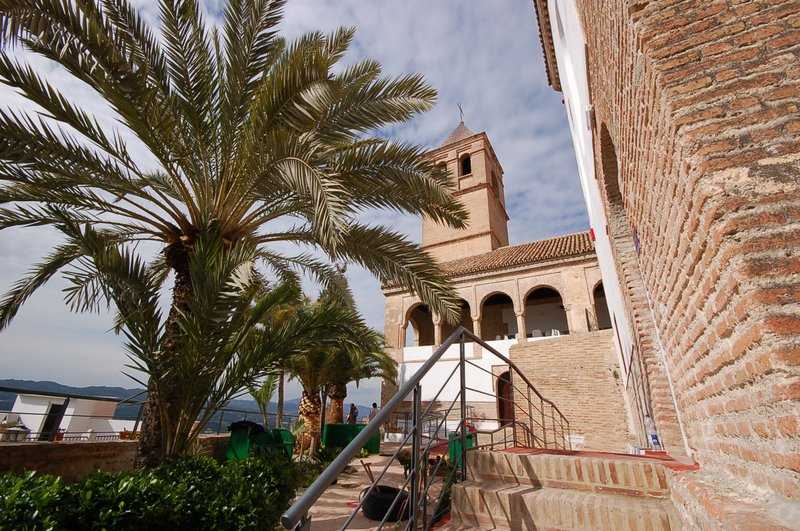
The upper area is the site of the Moorish alcazaba (perhaps it was a caliph construction, but it acquired importance from the 13th century onwards), of which some walls and the keep still remain. Remains of the Medina wall also still stand (with the Villa and Antequera gates), the interior of which has labyrinthine streets that have been maintained at the foot of the castle and where you will find Santa María la Mayor de la Encarnación Church. It stands on the site of the former Moorish mosque, which was consecrated as a church in 1487, and from which the minaret and Mudéjar elements (coffered ceilings, arches...) still remain. Nearby is San Juan Bautista, which was also built on the site of a mosque but the building has been greatly transformed (however, Moorish remains can still be discerned, especially in the decoration and exterior surfaces), with the neo-classical style dominating its architecture.
Next to the Medina is the suburb known today as San Francisco. It has an Arab street layout and is where the convent of the same name is located. This building also substituted a mosque. However, not much of the Mudéjar style (coffered ceilings, pillars of the cloister) remain, with the Baroque chapel of Buen Pastor now a notable feature. The neighbourhood (today the urban, administrative and commercial centre of Vélez) was the home of artisans, the upper classes and wealthy families who left a series of houses (including the so-called Cervantes), with the Palacio del Marqués de Beniel a particular highlight (a Renaissance building with Mudéjar elements, dating back to the 16th century), which is today the headquarters of the Foundation dedicated to María Zambrano. In another of the old suburbs beside the Medina, the San Sebastián district, which also holds traces of Al-Andalus, you will find a 15th century shrine, which is almost in ruins.
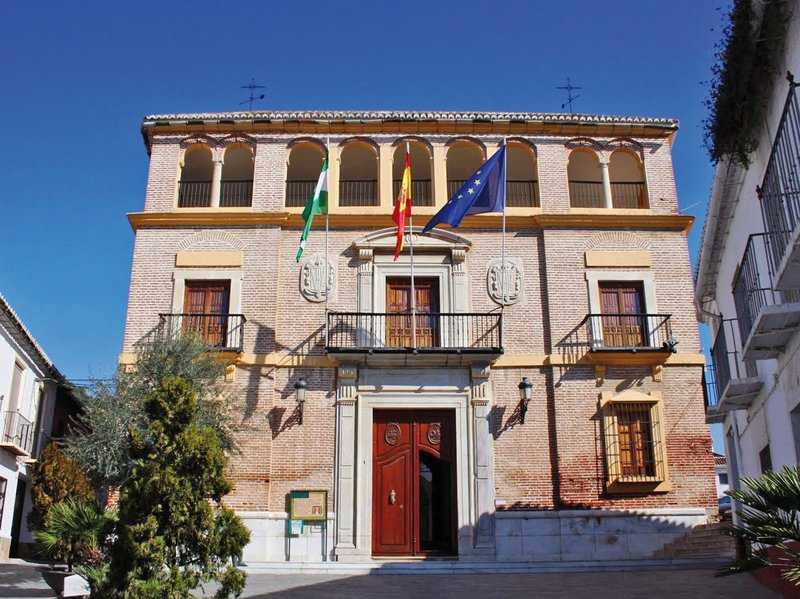
Outside of this area, San Juan de Dios Hospital, from the end of the 15th century but reformed significantly a bit later, still has a Mudéjar courtyard. Buildings from the 16th century include Gracia Monastery, (the nuns were put up in a house in the Medina before being transferred to the current building found on Calle Monjas), which encompasses a Baroque church and the municipal palace, which was the headquarters of the court and military government of Granada. Seventeenth century structures include Jesús, José y María Monastery (with a mannerist church), San José de la Soledad Convent (with a façade of the same style) and Los Remedios Shrine (on San Cristóbal hill, the home of the patron saint of Vélez, whose statue comes from Granada). The 18th century oversaw the construction of Carmelitas Convent, Piedad Chapel (designed in an exuberant, Andalusian baroque style), the granary, and Fernando VI Fountain (a Renaissance and neo-classical feature).
The most important Moorish handicraft was pottery but Nasrid tiles, liturgical embroidery, lamp workshops, saddlery and glass workshops still remain. Confectionary involves a Moorish influence and gastronomy in general is inspired by fishing and vegetable patches. Flamenco is present (the legendary Juan Breva was from here), especially Verdiales, while celebrations are no different from other Andalusian places: Easter Week (Andalusian event of national tourist interest), Las Cruces (main point on Calle Cruz del Cordero); the San Miguel Fair and the Velaílla del Carmen. However, different settlements (Torre del Mar or Benajarafe) have their own festivities.



